How to grow alliums
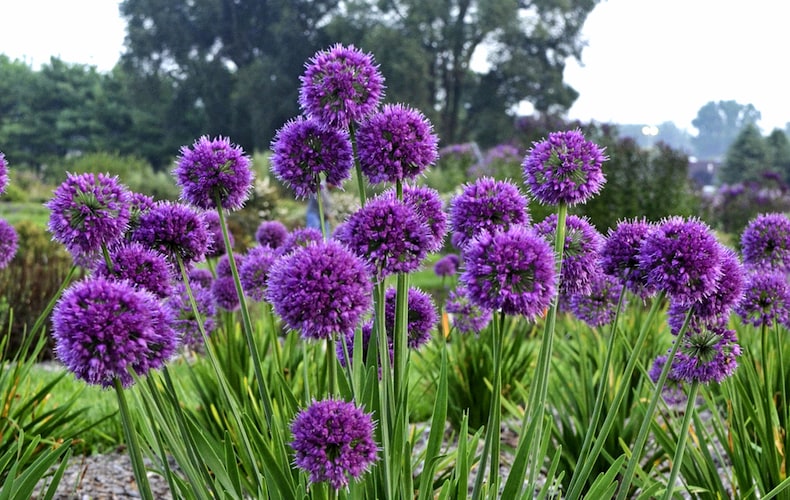
Alliums add structural interest to your garden
Image: Allium 'Lavender Bubbles' from Thompson & Morgan
If you know your onions, you’ll relish the prospect of planting allium bulbs in your flower beds as well as your veg patch! With their statuesque proportions and pretty pom pom-shaped heads, they offer colour, texture and architectural interest from spring to early summer. Here’s how to get the most from these spectacular flowers.
Browse our full range of allium bulbs for more ideas.
Where to grow allium flowers
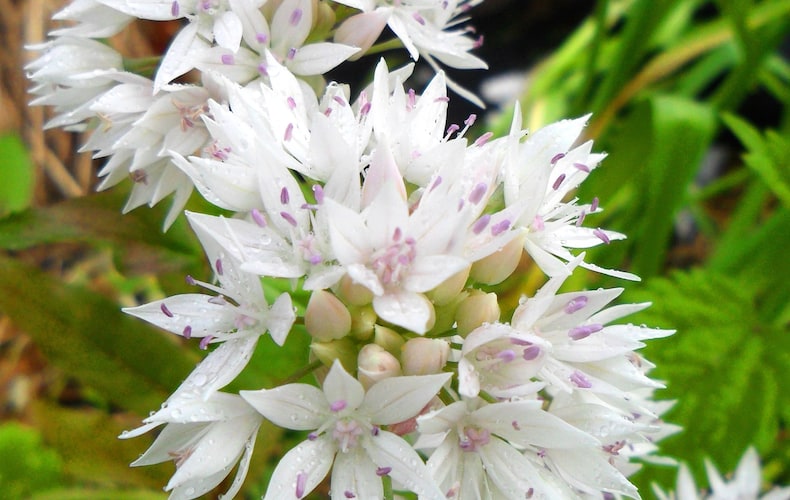
Allium amplectens is perfect for the front of a border
Image: Allium amplectens 'Graceful Beauty' from Thompson & Morgan
Alliums are hardy bulbs that tolerate a variety of conditions but they positively thrive in fertile, well-drained soils, in sun or semi-shade. The only thing they really don’t like is heavy, waterlogged soil which can cause the bulbs to rot in the ground. Before planting, treat your soil to some well-rotted compost or manure, and you’re set for a spectacular display come the spring.
The taller alliums like ‘Purple Sensation’ tend to look best at the back of your border, but some of the smaller varieties like Allium amplectens ‘Graceful Beauty’ grow to a less imposing height of around 30cm, making it perfect for massing at the front of borders or for planting in pots.
How and when to plant allium bulbs
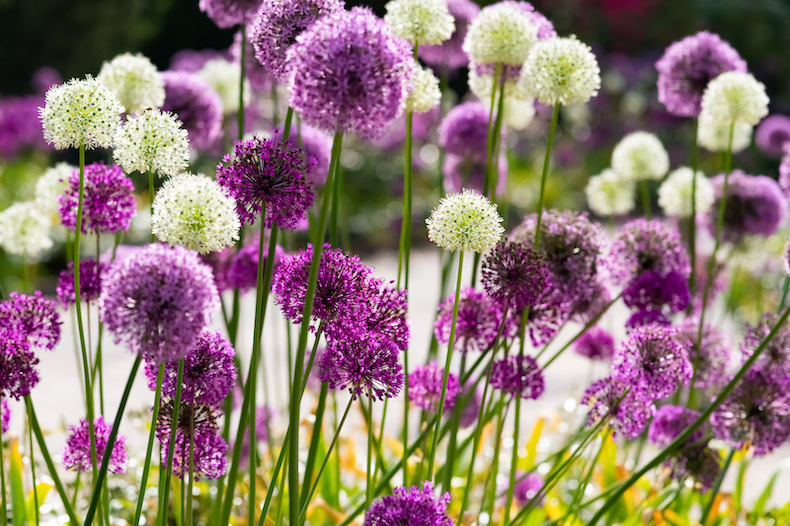
Plant your bulbs deep to ensure the tall stems don't fall over
Image: Allium 'Big Impact Mixed' from Thompson & Morgan
Taller alliums present quite a large surface area, so you must take care to bury the bulbs deep enough to prevent the wind knocking the stems down. Typically, you should plant the bulb to a depth of four times the diameter of the bulb, allowing a minimum of 10cm between bulbs. Tamp the ground down firmly, marking the spot where you planted the bulbs.
It’s best to plant your allium bulbs during the autumn - from September until the middle of November. Being such a hardy bulb, planting them in December shouldn’t present a problem as long as you avoid doing so during hard frosts. Do plant your bulbs as soon as you can after you receive them or they may begin to dehydrate.
Caring for alliums
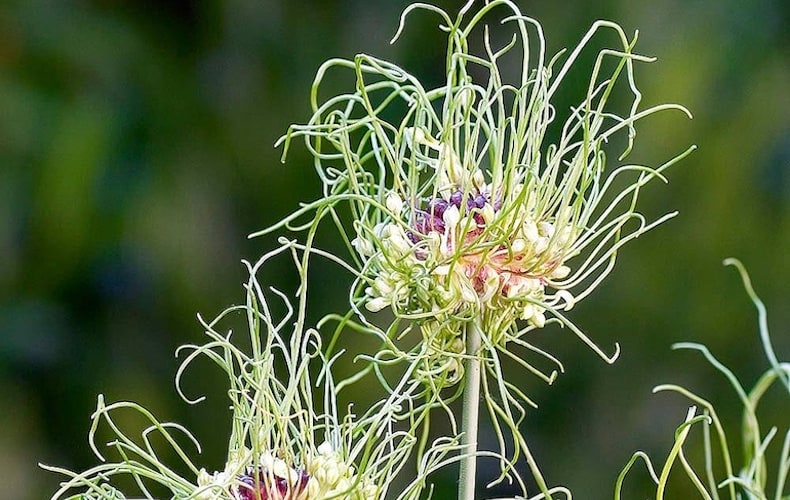
Make a statement in your garden with unusual varieties like allium 'Hair'
Image: Allium Hair from T&M/©Visions BV, Netherlands
As a tough bulb, alliums don’t need lifting each year and tend to do better when they’re allowed to establish over a number of seasons. Because the seed heads look so attractive, you may find that your plants self-seed and that, this being the case, you may wish to thin them out once in a while.
Simply mark the ground where your alliums are so that, when the foliage dies back, you can find them again. Dig them up, separate them and replant. Alliums like deep, rich soil, so they love the environment of your borders and kitchen garden and, along with your other plantings, will benefit from a thick layer of mulch during the spring.
Coming from the same family as onions and garlic, your alliums are prone to the same pests and diseases that afflict their vegetable cousins. Onion white rot, downy mildew and onion fly tend to be less of a problem when growing alliums in borders, but it’s best to avoid planting them where you have previously grown onions.
4 of the best ways to showcase alliums in your garden
When selecting allium varieties, consider the size, colour and flowering period to get the best effect. Keep in mind that you’ll need to provide them with the right growing conditions and adequate sunlight for a successful display. Here are some practical ways to incorporate alliums into your planting scheme:
1. Choose early varieties for a burst of late winter colour
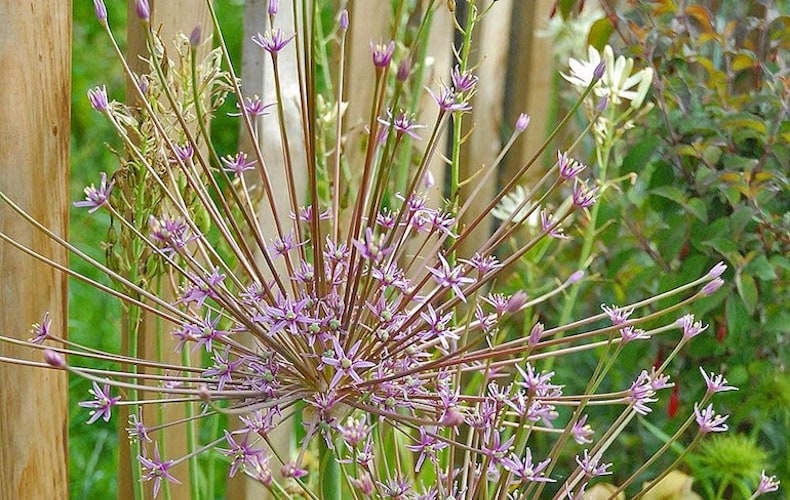
Some varieties bloom in February and retain spectacular seed heads through summer
Image: Allium 'Schubertii' from Thompson & Morgan
If you’re looking for late winter colour, some alliums start blooming from as early as mid-February, making them a must for anyone who likes to get off to a quick start. Check out allium ‘Schubertii’ which, with its dainty pink florets, makes a wonderful early display. And as the blooms fade during mid to late May, you’re left with wonderfully architectural seed heads which add extra structure to your borders right through the growing season and beyond.
2. Create a firework display at the back of your borders
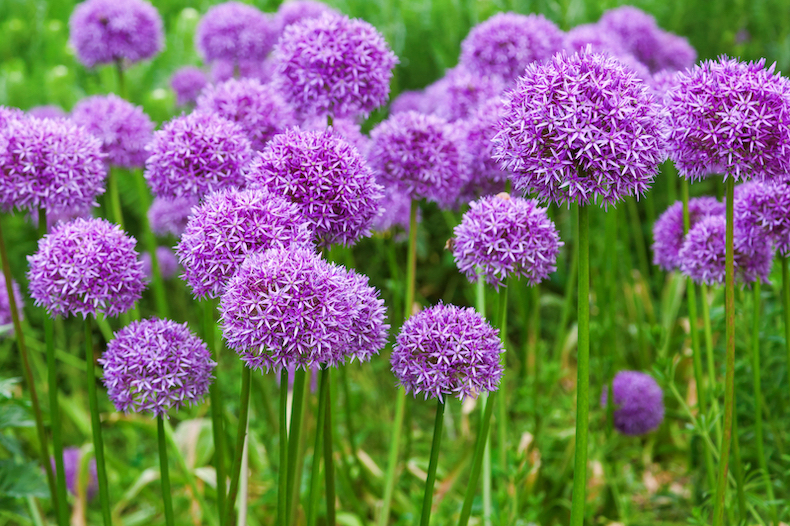
Allium 'Purple Sensation' makes a explosive display in any garden
Image: Allium 'Purple Sensation' from Thompson & Morgan
For a bold splash of vibrant colour in late spring, before the rest of your planting reaches the peak of its crescendo, you can’t really go wrong with alliums. In particular, the taller stemmed plants like dazzling ‘Purple Sensation’ grow to about 90cm in height with 15cm spherical blooms made up of a multitude of bold lilac flowers. By planting them at the back of your borders, you ensure these floral fireworks, which explode into bloom during May and June, provide a spectacular backdrop for the rest of your planting.
3. Fill patio containers with shorter varieties
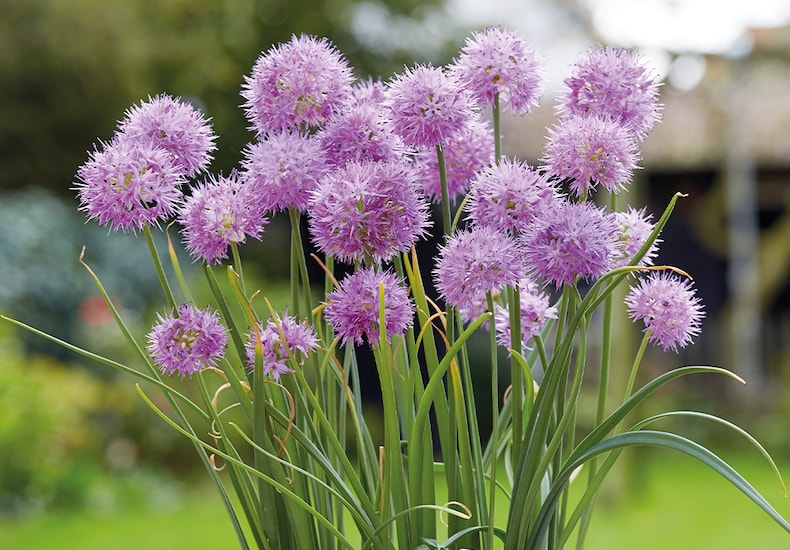
Compact varieties like 'Rosy Dream' make excellent container plants
Image: Allium carolinianum 'Rosy Dream' from Thompson & Morgan/©Visions BV, Netherlands
Swap out your usual spring container displays for something a little different and fill your pots with compact allium varieties. Alliums like 'Rosy Dream' provide an explosion of fluffy pink flower heads through May and June, brightening up your patio or balcony with their elegant charm. Reaching just 40cm tall, they look particularly effective in containers when planted en masse.
4. Interplant your roses with alliums for natural pest control
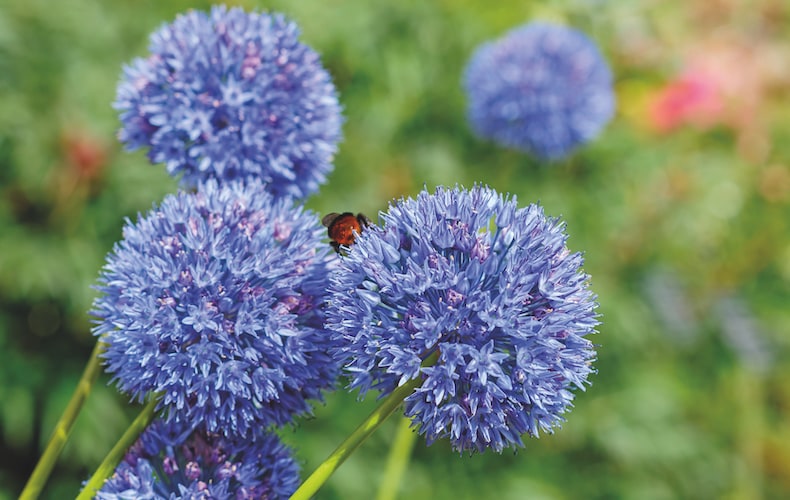
Aphids hate the scent of alliums, but bees and other pollinators love to visit
Image: Allium caeruleum from Thompson & Morgan
Some are sniffy about growing alliums in their flower beds because, being from the same family as onions and garlic, there’s the potential for an oniony smell. But though these plants do produce a slightly garlicky odour, this is normally lost among the scent from your other flowers. On the plus side, even though you might not be able to smell anything, aphids find the scent repellent, making this a fine flower to grow in amongst your roses.
With their incredible blooms and sculptural seedheads, alliums really do make a fantastic addition to your spring and summer planting scheme. Looking for more inspiration? Find everything you need to know about spring flowering bulbs over at our helpful hub page.
Sign Up For Exclusive Special Offers




© 2024 Thompson & Morgan. All rights reserved. A division of Branded Garden Products Limited.
Sign up for exclusive offers!



